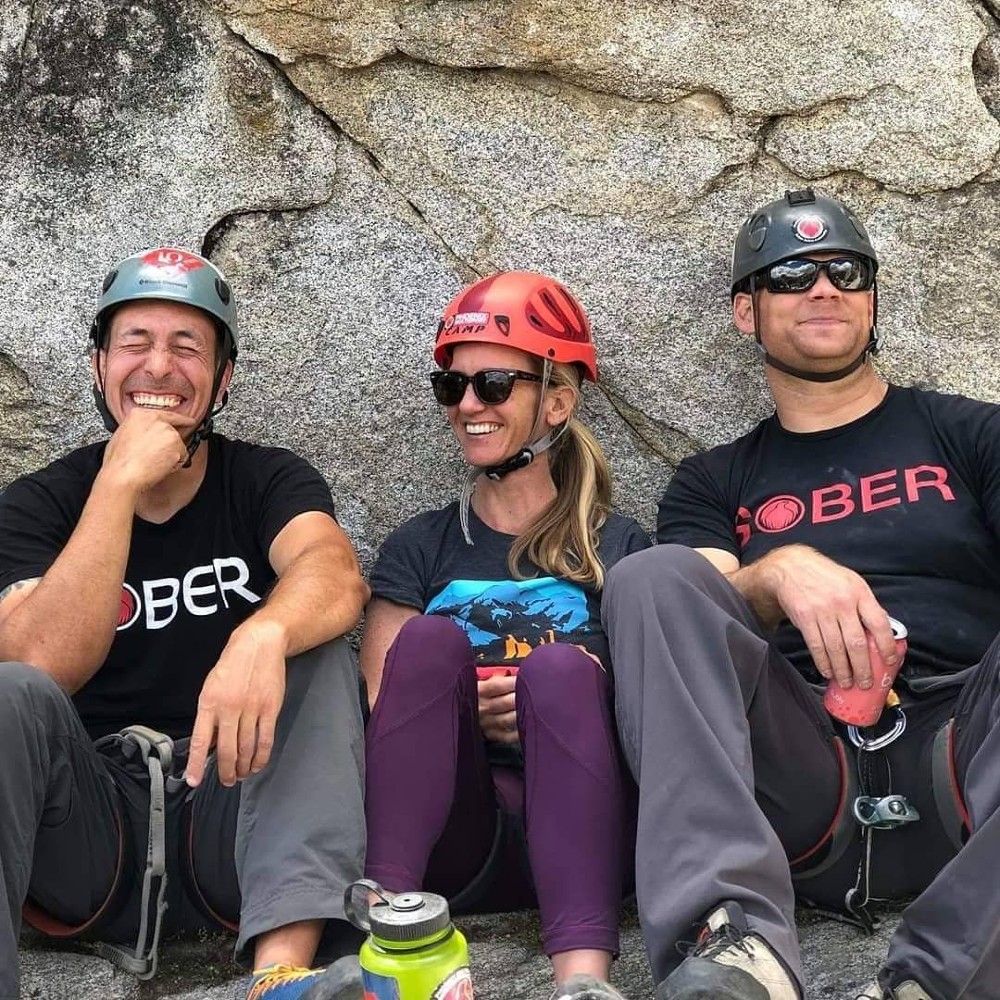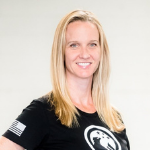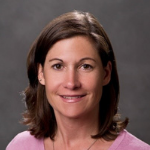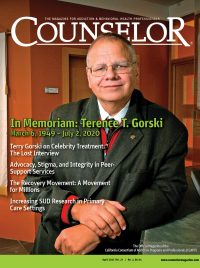Share
Thirteen years ago, I was waiting tables at a restaurant by the pier in Newport Beach when the manager brought out a tray of seasonal cocktails and told the staff we were required to taste them so we would be better prepared to sell the new drink menu. No one knew I had just spent 120 days in three treatment centers getting sober after a ten-year drinking binge. No one knew I rode my bike to work every day because I sold my car to help pay for treatment. No one knew I was required to go to Twelve Step meetings at 6:30 AM or that I was living in a sober home. I busied myself and tried to avoid the situation, feeling the panic rise in my chest as the manager kept pressing me to put down what I was doing and participate.
I felt frustrated and demoralized that I had been advised to get this “get-well job” to supposedly humble and center myself, despite having a degree in biochemistry from a prestigious university. Shaking with fear, I lifted the frosty glasses and pretended to drink, dipping a straw into each and tasting only a drop, when what I really wanted to do was down two cocktails so I could just breathe again.
I felt so hopeless, and in that moment there was no one I could talk to. I declined the invites to go out for drinks with the other servers after work, and instead dipped into the liquor store around the corner. Afraid I would be found out, I desperately looked around to make sure no one would see. I bought a couple of tiny vodka bottles and drank them alone in an alley. I felt a physical sigh of relief, but the joyful sounds spilling out of nearby bars brought tears to my eyes. I knew I could no longer be a part of that world, but my new world was incredibly hard and lonely. Climbing on my bike, I rode home and crept back into my sober living house. Without waking the two women in the other room, I went to sleep, dreading the 6:00 AM wake-up call for the morning meeting.
There was so much talk about trauma in all the treatment I received, but no one mentioned how traumatizing it is just to get sober. I continually felt like something was wrong with me or like I was not “doing it right.” I was told I needed to be around sober people, but I felt unable to cope with the war stories I heard over and over, which caused heightened anxiety and fear because I did not feel like I belonged. I felt lost and unable to be myself around sober people or the rest of the world.
I thought back to Chris, the leader of the athletic program in my first treatment center. She was a high-energy, smiling source of light who had left a lasting impression on me. For one hour every day, she had us sweating or in the pool, laughing and moving. It was the only hour in the long days of treatment when I felt like I might be okay. Suddenly the perfect “get-well job” dawned on me.
I applied for a position selling memberships at the gym where I had been riding my bike to do my daily workouts. Growing up as an athlete and outdoor enthusiast, physical activity was a source of joy in my life that I had long left behind in my drinking and drug use. The gym was a good environment for me and the job came with a free membership, which was perfect as I could not afford it anymore. Working out helped with the crippling anxiety and doom-and-gloom I had been feeling. A few months into working there, I was able to stop taking the antidepressants I had been prescribed in treatment.
Though I was starting to feel better, I felt fractured by hiding that I was in recovery and struggling to stay sober. There was the “me” that went to meetings and the “me” that existed outside of meetings, and neither of them felt real. Each time I returned to drinking after periods of sobriety, feelings of shame and hopelessness about starting over again were compounded. I remember hanging my head and standing up for a newcomer chip for thirty days in a row, like the previous months of work and growth meant nothing because I drank. Being bombarded with advice on how to “work a better program” each day was not helping. Devastated, I vowed to never do that again.
There was so much talk about trauma in all the treatment I received, but no one mentioned how traumatizing it is just to get sober.
So I would try to wait out thirty days to return to a meeting without having to stand up for the whole world to judge my next slip, often drinking again before I could make it.
One particularly bad relapse that landed me in a detox left me determined to change. After mustering the strength to return to a workplace where I had once drunk on the job and called out sick with no notice, I got honest with my boss about my alcoholism and shared with her my vision for a new purpose as a fitness trainer. She and the leadership team believed in me and paid for me to get certified as a personal trainer, changing my job role and my life forever.
I simultaneously got certified as a holistic health and nutrition coach, where I learned about self-care and self-love. Rather than overtraining, bingeing on sugar and guzzling caffeine, I was doing yoga, eating nourishing meals, and going to bed early. In this school we were also taught a “primary foods” concept, which posited there are four essential things that “feed” us in our lives:
- Healthy relationships and community
- Sense of purpose
- Spiritual connection
- The physical relationship we have with our bodies (i.e., what we put in and how we move)
Embracing this concept allowed me to see that turning to alcohol was not a defect, but a symptom of imbalance.

As a trainer and a health coach, I helped others through transformations that taught me as much about myself as it did them. My clients were transforming—not only physically, but also mentally and emotionally. Our relationships were about so much more than the workouts.
From there I went on to open and manage several group fitness franchises, where I learned the power of community through fitness. Here, people were not showing up with their headphones in and avoiding those next to them, they were finding friends, leaning on each other for support, and motivating one another toward a more fulfilling lifestyle.
I started to wonder what could have been different for me in early recovery if I had like-minded friends. I had stumbled along and eventually found my way, but what if it did not have to take so long and what if I did not have to do it alone? What if I did not feel the need to hide my recovery?
Six years after working at that restaurant in Newport Beach, I hired a trainer at one of my fitness studios and it turned out we had both been servers there at the same time and she had been sober for years. She could have been someone for me to talk to in those fearful moments at the restaurant, but at the time it did not occur to me that I might not be the only one who worked there and did not drink. Had we both been open about our sobriety, there could have been a hand for me to grab onto.
Imagine if my self-esteem could have been boosted early in recovery, instead of being told I needed to be humbled or that I needed to lower myself in order to stay sober. Imagine if I did not have to label myself as an alcoholic every time I introduced myself to other people in recovery. I believe I would have confidently forged a new identity around the positive changes I was making in my life, instead introducing myself as a friend in recovery, a coach, or a runner. My early recovery could have been so different had I been immersed in a nurturing and healing community with like-minded friends right out of treatment.
Flaws in the Recovery System
In America today, we lose a loved one to excessive alcohol or drug overdose every three minutes (Esser et al., 2020; Hedegaard, Minino, & Warner, 2020). That is the equivalent of a Boeing 747 crashing every day with all lives lost. Despite this staggering figure, only about 11 percent of the 21 million Americans who need treatment can access it (SAMHSA, 2019). This leaves almost 19 million people at any given time left to either figure out how to recover on their own or die. Likely those stats are no surprise to clinicians reading this. There are not enough beds, cost for treatment is prohibitive, there are long waitlists, and even when someone might be able to access care, they cannot go because they cannot afford to miss work. Women, who often hold child-rearing responsibilities, are disproportionately impacted because going to treatment means leaving their children to be cared for by others. It can also be very difficult to find extended childcare after you have burned bridges with family and only have friends who you used with (NIDA, 2011).
Even when people get to treatment, multiple episodes of treatment are often required before they can achieve long-term abstinence. There is a significant over-reliance on acute care strategies in the absence of a more comprehensive system that recognizes the value of prevention, early intervention, and continuing support (Kelly & White, 2011). While clinicians are leveraging evidence-based practices to deliver high-quality care, they are no match for a flawed system.
Shame and stigma are at the heart of the problem, fueling what people feel and how they think about addiction and recovery. Shame is so overwhelming that it compels people to lie to themselves and others, triggering relapse after relapse. Because the norms and mental models associated with addiction and recovery have been deeply woven into the fabric of society for centuries, changing how people think and feel is profoundly challenging.
There is much to learn from others who have brought about meaningful change through movements. The Civil Rights and Women’s Suffrage Movements were fueled by a shared human truth that inspired those who had never been directly impacted by stigma and discrimination to come alongside those who had been. Unity around a shared human truth allows movements to overcome challenges and resistance more effectively. Movements pair messages with actions. While Martin Luther King Jr. was a powerful speaker with a powerful message, the Civil Rights Movement was successful because of the related actions taken by the Selma Nine, Rosa Parks, and thousands of others acting locally and/or peacefully protesting. The actions of small groups move rhetoric to change and draws together those with shared experiences.
The Phoenix Model of Recovery
The recovery movement has been in process for many years now, with significant wins along the way, but many are still unaware it is happening and have not heard the call to join the movement. The Phoenix is a free, sober, active community for those in recovery. It combines the transformational power of human connection and an active lifestyle to empower those struggling with substance use disorders (SUDs) to heal and live their best lives. They leverage activities like running, hiking, and music to bring people together and provide cultural guardrails that promote safety and healing.
The Phoenix was founded in 2006 by Scott Strode. Waking up on the floor of his bathroom after a twenty-four-hour binge, Strode, like millions of others, realized that if he wanted to live, he had to stop drinking and using drugs. At that time, he was too ashamed to go to treatment and while he experimented with Twelve Step programs, he ultimately found that the people he met mountain climbing and in the boxing gym—along with the confidence gained each time he crossed a finish line—were ultimately what fueled his recovery and helped him change his life.
Quality and Simplicity
The Phoenix pairs traditional treatment, recovery support, mutual self-help, education, and business with real-life experience and then applies them to growing community in recovery. Studies show that physical activity and social connection can strengthen recovery outcomes. Within the Phoenix community, over 85 percent of active members report sustained abstinence at the six-month mark. Members who attend regularly experience significant improvements in their physical health, mental health, and motivation to stay sober; they feel more hopeful, socially connected, and confident that they can do whatever they put their minds to (Wyker & Hillios, 2019). Providing simple, quality community engagement motivates people to raise their hands and lead community activities around the country which, in turn, fuels exponential growth. When you do what you do well, you are more likely to become a trusted ally in the movement.
Inspiration Will Take You Further, Faster
Over the years, The Phoenix realized that if they relied on paid staff only to grow the community, the reach would be limited. Instead, they harness the passion of members and supporters to magnify their outreach. They built and tested a volunteer strategy that combines community organizing with a grassroots approach that moves Phoenix staff members into “change-maker” roles, inspiring, supporting, and empowering volunteers to amplify impact organically and efficiently.
Stronger Together
Recovery alone is really hard, and advancing a movement alone is simply not possible. By working together and forging mutually beneficial partnerships, we not only better serve those in need, but we also open the door for more people to connect with the movement. There are allies in cities and towns around the country eager to roll up their sleeves and help. Welcoming diverse ideas and partners will strengthen the movement.
Recovery advocacy in America has been responsible for many wins to date, including the increase in funding for recovery support services; recovery coaching; and advancing policies such as the Comprehensive Addiction and Recovery Act.
As a trainer and a health coach, I helped others through transformations that taught me as much about myself as it did them. – Lauren Deperine
Overcoming the stigma and shame that perpetuate policies, practices, and challenges to accessing care is not a luxury, but a necessity. It is unacceptable to remain indifferent to the destruction of so many families or to accept the tremendous loss of life associated with SUDs. Changing hearts and minds is no easy task, so the following are a few ways to help:
- Join the Movement: No movement can be successful when led solely by those impacted directly by injustice; it must include allies who share outrage about the current state. Clinicians and counselors are in a unique position to broaden the lens of the injustices faced by those recovering from SUDs. While we continue to provide excellent care, we must also stand alongside our clients, loved ones, and friends to say the status quo is not good enough. By virtue of our training and professional expertise, we are uniquely positioned to influence others. We need to share our experiences and inspire others to come alongside.
- Challenge Mental Models: Do people really need to hit rock bottom? Does relapse really have to be part of the process? Is it possible that these and other mental models are trapping us and preventing us from creating new and better treatments or approaches to recovery? If we do not ask the questions, we will not find the answers.
- Innovate: Innovation is not valued nearly as highly as it needs to be. While the utilization of evidence-based practices is critical to ensuring people get the highest quality care available, innovation is equally as important to prioritize. Technology has produced revolutionary change through innovation. Smartphones have not only transformed communication, the applications they run are so sophisticated that they can be used to deliver remote health care anywhere in the world. Imagine applying that kind of innovation to advancing outcomes for addiction recovery and the momentum it would contribute to the movement.
Addiction may have been a reality since the beginning of time, but what if together we could obliterate addiction and stigma? Imagine what the world could look like if there was a community to heal and reach back to help others. The ripple effect could be a game changer.
References
- Esser, M. B., Sherk, A., Liu, Y., Naimi, T. S., Stockwell, T,. Stahre, M., . . . Brewer, R. D. (2020). Deaths and years of potential life lost from excessive alcohol use: United States, 2011–2015. Morbidity and Mortality Weekly Report, 69(30), 981–7.
- Hedegaard, H., Miniño, A. M., & Warner, M. (2020). Drug overdose deaths in the United States, 1999–2018. Hyattsville, MD: National Center for Health Statistics.
- Kelly, J. F., & White, W. L. (Eds.). (2011). Addiction recovery management: Theory, research and practice. New York, NY: Springer Science+Business Media.
- National Institute on Drug Abuse (NIDA). (2011). Substance abuse among the military, veterans, and their families–April 2011: A research update from the National Institute on Drug Abuse. Retrieved from https://radarcart.boisestate.edu/library/files/2017/07/TopicsinBriefVeterans.pdf.
- Substance Abuse and Mental Health Services Administration (SAMHSA). (2019). Key substance use and mental health indicators in the United States: Results from the 2018 National Survey on Drug Use. Retrieved from https://www.samhsa.gov/data/sites/default/files/cbhsq-reports/NSDUHNationalFindings Report2018/NSDUHNationalFindingsReport2018.pdf
- Wyker B. A., Hillios, J. S. (2019). Psychological safety as a mediator for personal growth and social connection: An assessment of the Sober Active Community model. Substance Abuse, 40(4):469-472.
About Me
Lauren Deperine, BS, brings over ten years of leadership in the fitness industry and life experience as a peer in long-term recovery to her role as director of The Phoenix in Southern California. In this position she can apply her background in science, wellness, and organizational management to help grow their nonprofit, sober, active community. She holds a bachelor’s in biochemistry and molecular biology from Boston University, and a holistic health practitioner certification from the Institute for Integrative Nutrition.
Jacki Hillios, PhD, is deputy executive director of The Phoenix, a successful peer-to-peer-based addiction recovery program that embraces a physically-active and supportive community. In her role, she focuses on oversight and leadership in program design, implementation, evaluation, and expansion. Dr. Hillios has worked with The Phoenix in Colorado and Massachusetts since 2006 and has helped expand the model to twenty-two states and over forty communities across the country. She is an active public speaker and in 2013 was chosen to do a TEDxBoulder presentation on “Transcending Addiction and Redefining Recovery.”











 Counselor Magazine is the official publication of the California Association of Addiction Programs and Professionals (CCAPP). Counselor offers online continuing education, article archives, subscription deals, and article submission guidelines. It has been serving the addiction field for more than thirty years.
Counselor Magazine is the official publication of the California Association of Addiction Programs and Professionals (CCAPP). Counselor offers online continuing education, article archives, subscription deals, and article submission guidelines. It has been serving the addiction field for more than thirty years.